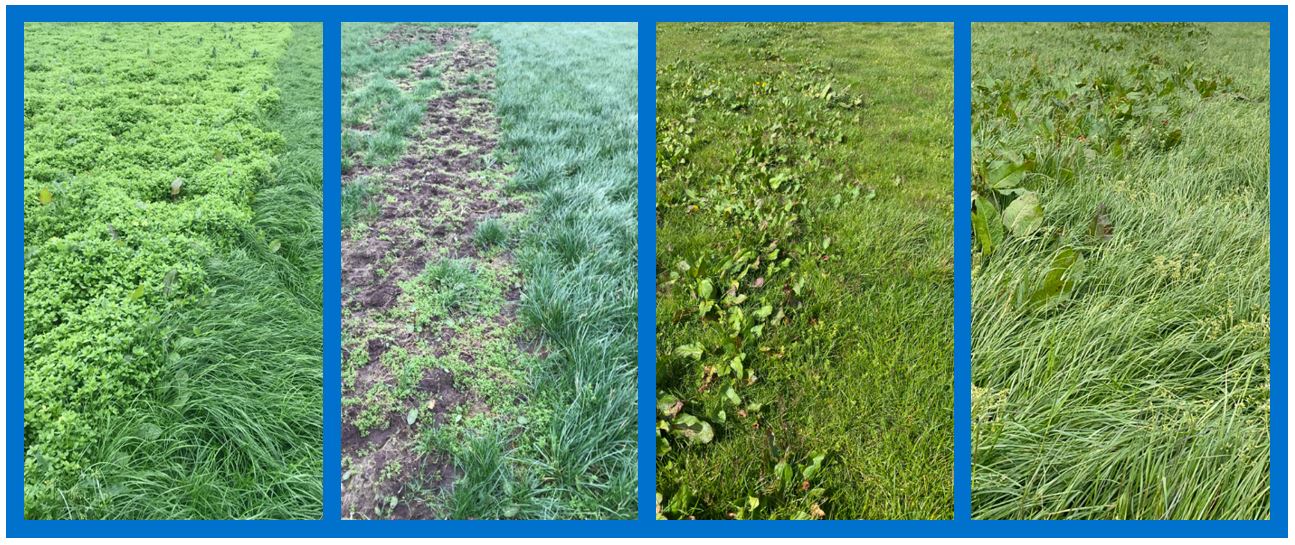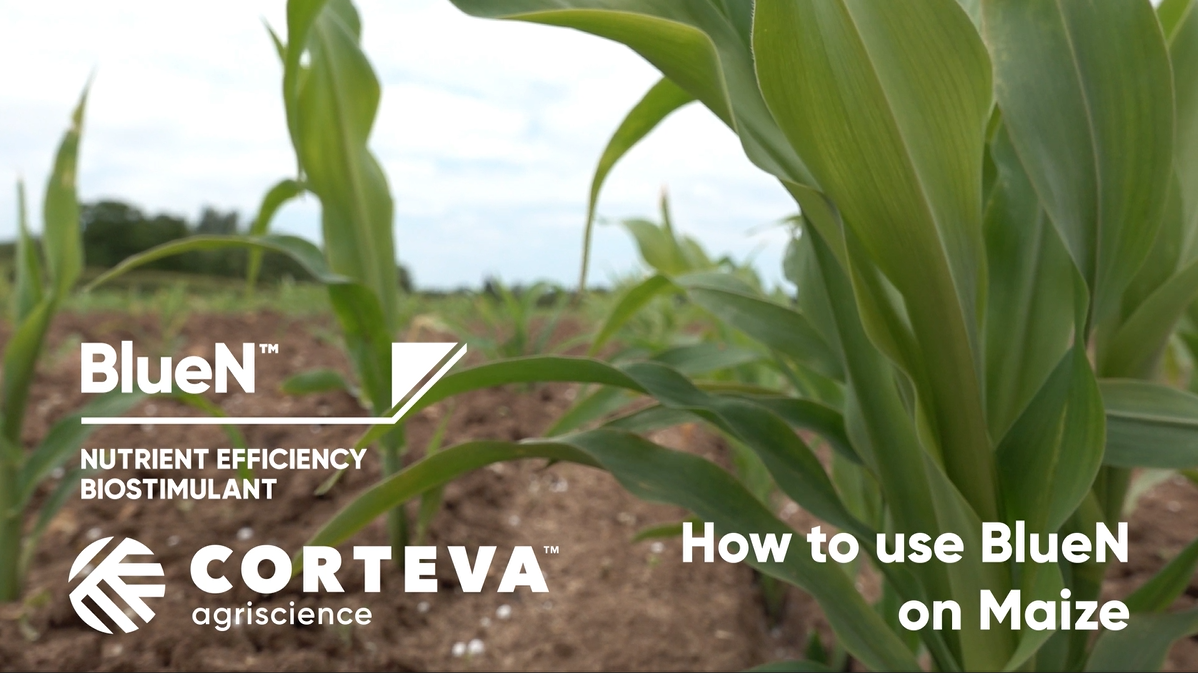|
|
Corteva’s focus on R&D and investment in innovation means an expansion of solutions to advance forage productivity. This includes our expanding biologicals range, and new clover-safe herbicide. Ensure you stay connected with our updates by updating your preferences here and feel free to share the link to our sign-up page with people you feel will be interested in this content so they can also be fully informed.
|
Early season chickweed control
|
Early spring is the time of year when common chickweed and common mouse-ear begin to emerge and smother grassland. Their growth habit allows them to rapidly colonise any gaps in the sward.
These weeds can be found in established grassland, often in damaged swards, or where slurry injectors open the sward allowing their establishment.
- Their plants can produce up to 1300 seeds.
- It only takes five to six weeks from germination to seed dispersal.
- Their plants are capable of four to five generations a year.
For both common chickweed and common mouse-ear control use Envy®
- Apply from 1st February until the end of November.
- Florasulam, one of the two active ingredients in Envy, allows it to work at cooler temperatures.
- If conditions allow, spray before the chickweed flowers and before it impacts grass growth.
- It has excellent grass safety.
- Rainfast in 2 hours.
- Stock exclusion of just 7 days.
Rates
1.0L/ha in newly sown leys, or 1.5L/ha if the weed spectrum/ weed size is significant.
Chickweed competes aggressively with grass for space, light, water and most importantly nutrients and left uncontrolled can dramatically reduce presence of grass and encourage other weeds to come through when they die back. This time series below shows just that with docks being the successful coloniser.
|

|
New clover-safe herbicide approved!
|
Our exciting new clover-safe herbicide, ProClova® XL, has been approved by PRCD.
It’s the first new approval of an active ingredient for use on grassland since the authorisation of aminopyralid, a core component of the herbicide Forefront® T way back in 2008.
The new active ingredient in this product is called Rinskor™ - its chemical name is florpyrauxifen-benzyl.
Today’s herbicides are developed to have increasingly favourable environmental profiles, and Rinskor active is a prime example.
- It has a reduced environmental impact as it breaks down rapidly in soil, in water and in the tissue of tolerant plants, like grassland and rice.
- It has a low dose rate compared to many other herbicides.
- Its ecological profile has earned Rinskor active several international awards, including a Green Chemistry Challenge Award.
The outstanding technology this product represents is reflected through its approval as a weed control solution that is safe to grass and clover, the ability for it to be used on newly sown leys for seedling weed control, and its ability to be used at higher rates on bigger perennial weeds in established grassland.
ProClova XL will resonate widely as many newly sown leys are planted and then swamped with weeds that limit the ley’s potential on both quantity and quality of forage. This new clover-safe herbicide should be available to purchase from April onwards and we will share more product details in the next edition of the Forage Agronomy Update.
|

|
Increase maize yields with BlueN
|
BlueNTM is a nutrient efficiency biostimulant for use in a broad range of crops including maize. It contains Methylobacterium symbioticum, a bacteria found in nature, which fixes nitrogen from the air and converts it into usable nitrogen in the plant. BlueN provides a sustainable, supplemental source of nitrogen for the plant, ensuring the plant has access to nitrogen all season long.
|

|
To find out more about BlueN, watch our short video "How to use Nutrient Efficiency Biostimulant BlueN on maize" here.
|

|
PACTS results for 2024/25
|
Have you seen our PACTS® book yet? The latest maize PACTS results were published last month following a full programme of UK and Ireland trials in 2023. PACTS is an abbreviation for ‘Pioneer® Accurate Crop Testing System’ and refers to multi-location on-farm conducted trials that allow us to accurately describe the performance of the Pioneer maize hybrids we offer for sale.
|
Click here to download the 2024/25 edition of PACTS
|

|
|
|
If you haven't already, make sure you take a look at our Corteva Forage App. Key features include:
- Easy access to technical support and FAQs
- Optimise weed control with our grassland weed wizard tool
- Decision trees for grassland herbicides and silage inoculants
- Product information including labels, tech sheets, weed lists and how to use
|

|
|
|
|
|
TP Whelehan attended the Donegal Silage Competition Awards evening on 7th February in Letterkenny. John Boylan from Whelehan Crop Protection was there on the night to answer all things grassland.
We will keep you updated with upcoming events that we'll be exhibiting at in each edition of the Forage Agronomy Update.
|

|
Donegal Silage Competition Awards Evening
|
|
|
If you need technical advice or support, we are here to help.
For all enquiries about Pioneer maize hybrids, please contact Andy Stainthorpe using the contact details below:
Andy Stainthorpe
Mobile: +44 7801 183234
|
For technical enquiries concerning Corteva herbicides, biostimulants and nitrogen stabilisers, please contact Liz Glynn or the Hotline using the contact details below:
Liz Glynn
Mobile: 086 844 5306
|

|
|
|
Q. When can grassland herbicides first start to be applied?
A. Most grassland weeds, such as docks, need to show active growth before a herbicide application is made. Typically, weeds start to grow when temperatures are above 8oC and rising over a number of days. For good control you will want to see sustained active growth. Chickweed however, will grow in cooler conditions, and buttercups and dandelions emerge early and are best treated before they flower. More details on those weeds next month.
Q. What is the ideal water volume to apply grassland herbicides?
A. When applied via flat fan nozzles, water volumes for established grassland can range from 200 litres to 400 litres depending on the volume of grass present. Corteva encourage the use of low drift air inclusion nozzles with an application volume of 200 litres for all situations.
Q. What is the difference between common and mouse ear chickweed?
A. Both species come from the same family: Caryophyllaceae. Common chickweed (Stellaria media) is capable of 4-5 generations per year. It has few hairs and its stems are slender and weak. Mouse-ear chickweed (Cerastium fontanum) has hairy leaves and stalks. The flowers are often bunched together, on short stalks. Its leaf and stalk tend to be thicker than common chickweed. They can also feel sticky.
|
|
|
10 IASIS points will be awarded for those subscribing to the Forage Agronomy Update.
|

|